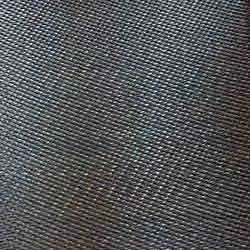
Satin Weave: Why It Looks Glossy
Share
When you think of fabrics that exude elegance and luxury, satin instantly comes to mind. Its smooth surface, fluid drape, and luminous shine have made it a timeless favorite in fashion, home décor, and textile design. But what exactly gives satin its signature glossy finish? The answer lies in the unique structure of its weaving technique — the satin weave.
What is a Satin Weave?
The satin weave is one of the three fundamental types of fabric weaves, alongside plain weave and twill weave. In a satin weave, the warp yarns (those running lengthwise) float over several weft yarns (those running crosswise) before interlacing again.
This distinct pattern results in long floating yarns on the surface of the fabric. Because fewer interlacings occur, the fabric’s surface remains smooth and uninterrupted, allowing it to reflect more light. The outcome is a sleek, glossy texture that makes satin fabrics stand out from others.
The Science Behind Satin’s Gloss
Satin’s glossy appearance is all about light reflection. The longer the yarns float on the surface, the more evenly light bounces off them. This even reflection produces a shimmering, mirror-like shine that appears luxurious and soft at the same time.
In contrast, fabrics woven with plain or twill structures have more intersections between threads, which scatter light and create a matte or textured finish. Satin’s smooth surface allows it to reflect light uniformly, giving it that distinct, polished glow.
Fiber Type and Its Impact on Shine
While the weave structure plays a crucial role, the fiber used also affects how glossy satin appears. Traditionally, satin was woven from silk, a naturally lustrous fiber. However, modern satin fabrics are also made from polyester, nylon, and acetate, which provide durability and affordability without compromising too much on sheen.
- Silk Satin: Offers unmatched natural shine, breathability, and softness.
- Polyester Satin: Retains its gloss for a long time and resists wrinkles.
- Nylon Satin: Lightweight and smooth, with a refined finish.
The combination of these smooth fibers with the satin weave amplifies the glossy effect, making the fabric ideal for evening gowns, wedding dresses, bedding, and upholstery.
Unlike other weaves, satin has an exceptional drape and fluidity, which enhances the movement and elegance of the garment. This is why satin is commonly used in clothing that needs to flow and shimmer gracefully, such as evening dresses, scarves, and luxury blouses.
Applications of Satin Fabric
Satin’s glossy texture and luxurious feel make it highly versatile. You’ll find it used across multiple industries:
- Fashion: Perfect for dresses, gowns, skirts, lingerie, and ties.
- Home Décor: Popular in drapes, upholstery, and pillow covers for a rich look.
- Bedding: Chosen for sheets, pillowcases, and comforters due to its silky touch.
- Accessories: Common in handbags, ribbons, and shoe linings for added elegance.
Final Thoughts
The gloss of satin fabric is not just about appearance — it’s a result of precise craftsmanship and smart weaving science. The satin weave structure, with its long yarn floats and minimal interlacings, reflects light evenly to create that coveted, silky shine. Combined with smooth fibers like silk or polyester, satin becomes one of the most luxurious and versatile fabrics in the textile world.
Whether you’re draping it on a runway model or styling your bedroom with it, satin’s glossy charm will always bring a touch of timeless sophistication.
